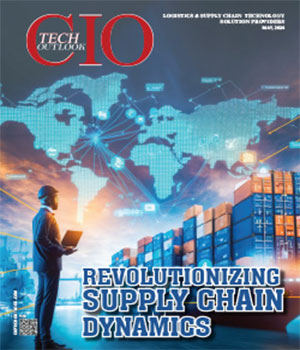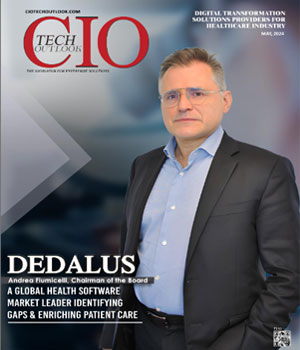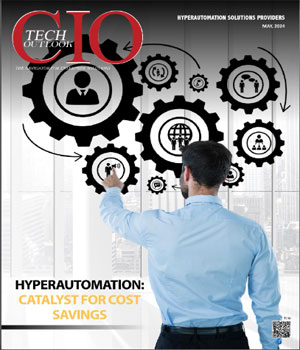
CIOTechOutlook >> Magazine >> December - 2016 issue
State of Digital Transformation – Opportunities and Trends
By
 You are in the final phase of your early morning dream and the alarm goes off at 6AM. Suddenly you remember that you forgot to buy milk yesterday and since you have an early morning meeting, it seems that you have to start your day without your cup of steaming coffee. Fortunately your refrigerator has already ordered milk based on your regular consumption pattern and available inventory. Also, your alarm clock has already instructed your coffee maker to start brewing your coffee and based on your office timing/meeting schedule, your laptop has instructed your boiler to maintain the water in the bathroom at your preferred temperature.
You are in the final phase of your early morning dream and the alarm goes off at 6AM. Suddenly you remember that you forgot to buy milk yesterday and since you have an early morning meeting, it seems that you have to start your day without your cup of steaming coffee. Fortunately your refrigerator has already ordered milk based on your regular consumption pattern and available inventory. Also, your alarm clock has already instructed your coffee maker to start brewing your coffee and based on your office timing/meeting schedule, your laptop has instructed your boiler to maintain the water in the bathroom at your preferred temperature.Does it sound like a dream or science fiction? Not anymore. With the rapid development in the field of Internet of Things (IoT), Robotics and Machine Learning, we have all the pieces of technology to make this happen and it’s just a matter of time until these technology pieces will be integrated to transform our way of living and the world as we see it.
According to Gartner, by 2020 there will be over 26 billion connected devices; while Morgan Stanley predicts 75 billion and Hammersmith Group predicts 100 billion connected devices. This means that there will be at least three times more connected intelligent devices than the world population. What is for sure is that the sheer number of smart devices is going to be mind boggling in the near future.
Some of the key trends that would shape future of Digital Transformation include:
1. Pervasive technologies and predictive analytics for customer experience
Pervasive technologies deal with the flow of information between the built in environment and its occupants. The environment is rich with information which can be utilized by us to enhance the quality of our work and life. Some basic examples like, customized deals in shopping malls based on geo-localization and buying pattern, traffic alerts based on the route taken to the office everyday etc.
Even Connected Autonomous Vehicles (CAV) are good examples of pervasive technologies and predictive analytics as they interact with their environment, based on some specific triggers, predict the outcome of the events and perform appropriately.
2. Cognitive Intelligence – Connected Autonomous Vehicles (CAV)
Connected vehicles use different communication technologies to communicate with the driver, other cars on the road (Vehicle to Vehicle), roadside infrastructure (Vehicle to Infrastructure), and the “Cloud.”
Autonomous vehicles are those in which the operation of the vehicle occurs without direct driver input to control the steering, acceleration & braking and are designed so that the driver is not expected to constantly monitor the roadway while operating in self-driving mode.
A CAV comes with in-built cognitive intelligence and predictive analysis as it has to distinguish between various types of objects on the road, e.g. pedestrians, cyclists, other cars etc. and take a decision on steering, acceleration, deceleration or braking accordingly. The CAV features will improve road safety, enhance the driving experience, reduce the potential for traffic jams and improve traffic flow.
3. Multi-channel Customer Connect – Wearable Technology
Wearable Technology or Fashion Electronics are clothing and accessories incorporating computer and advanced electronic technologies. The designs often incorporate practical functions and features.
Wearable devices are part of the network of physical objects or "things" embedded with electronics, software, sensors and connectivity to enable objects to exchange data with a manufacturer, operator and/or other connected devices, without requiring human intervention.
There is a huge range of applications for wearable technology in the personal computing, entertainment and gaming sector, and e-health sector.
4. Disintermediation – Business Platforms to connect new partners
Disintermediation Platforms are removing intermediaries from a supply chain in relation to a transaction or a series of transactions. In order to decrease the cost of servicing customers, traditional distribution channels, which had some form of intermediaries (such as distributors, wholesalers, brokers or agents), are now dealing with every customer directly or via internet.
Some basic examples are eCommerce platforms like FlipKart and Amazon, who source the products directly from the manufacturer. Other examples are reselling platforms like OLX, which connects the buyer and seller directly enabling successful transaction.
CXO Insights
Building a Business Case for the CIO's Digital...
By Jason Mowery, Director of Digital and Mobile Solutions, KPMG Advisory
Self-Driving Cars Are Already Changing The...
By David Silver, Head of Self-Driving Cars, Udacity
Enabling More Rapid and Affordable Software...





